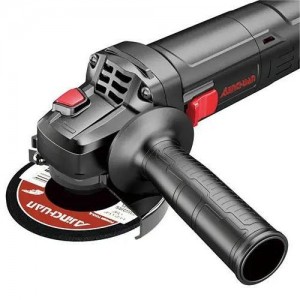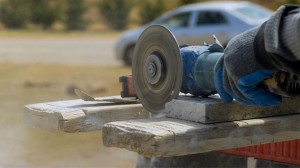As an efficient power tool, the light Angle grinder is widely used in metal processing and grinding operations. To maximize its service life and reduce maintenance costs, it is crucial to implement a predictive maintenance strategy. This article will explore how to extend the service life of light Angle grinders by at least 30% through predictive maintenance to ensure their long-term efficient operation.
First, regular inspections and preventive maintenance
The core of predictive maintenance lies in regular inspections and preventive maintenance. This includes regular visual inspections and functional tests of the key components of the diagonal mill, such as checking the grinding discs, grinding wheels, drive belts and electrical systems, etc. Through these inspections, potential problems can be detected early and preventive measures can be taken to avoid the occurrence of malfunctions.
Second, lubrication management
Proper lubrication is the key to extending the service life of Angle grinders. Regularly lubricating all moving parts, including bearings, gears and guide rails, can reduce friction and wear, thereby extending the service life of the components. Using high-quality lubricating oil and operating in accordance with the lubrication plan recommended by the manufacturer can significantly enhance the performance and reliability of the Angle grinder.
Third, cleaning and maintenance
Keeping the Angle grinder clean is equally important for its performance and lifespan. Regular cleaning of the Angle grinder, especially the grinding area and cooling system, can prevent the accumulation of dust and metal shavings, which may affect the cooling efficiency and accuracy of the tool. In addition, cleaning can also help detect any possible signs of damage or wear in a timely manner.
Fourth, operate correctly
The correct operation of the operator also has a significant impact on the service life of the Angle grinder. Ensure that operators receive appropriate training to understand how to start, operate and shut down the Angle grinder correctly. Avoid overloading and sudden starts or stops, as these may cause premature wear or damage to mechanical components.
Fifth, environmental control
The working environment of an Angle grinder also affects its lifespan. Try to use the Angle grinder in a dry and clean environment. Avoid operating it in damp or dusty conditions, as these environmental conditions may accelerate the corrosion and wear of components.
Sixth, component replacement
Worn or damaged components should be replaced in a timely manner. Using original or high-quality replacement parts can ensure the performance and service life of the Angle grinder. Delayed replacement may lead to more serious damage and higher repair costs for the sake of minor gains.
Seventh, technological upgrading
With the development of technology, it is also a good idea to consider regularly upgrading the diagonal mill. New technologies and improvements may offer higher efficiency, better durability and lower maintenance requirements.
Eighth, Conclusion
By implementing predictive maintenance strategies, the service life of light Angle grinders can be significantly prolonged. This not only includes regular inspections, proper lubrication, cleaning and maintenance, correct operation, environmental control, timely replacement of components and technical upgrades. Through these methods, the long-term stable operation of the Angle grinder can be ensured, unexpected downtime can be reduced, production efficiency can be improved, and ultimately a large amount of maintenance costs can be saved for the enterprise. Predictive maintenance is the key to ensuring the long-term efficient operation of Angle grinders and an important strategy for enterprises to enhance their competitiveness.
Post time: Jun-26-2025


